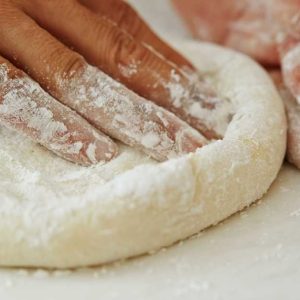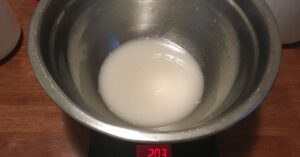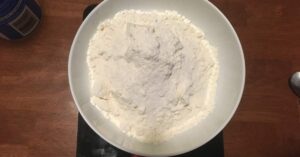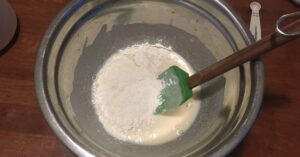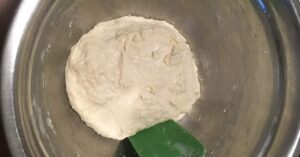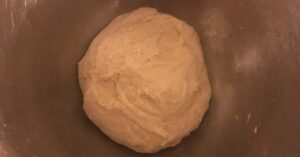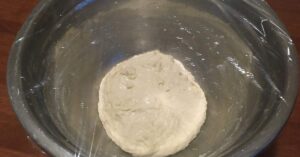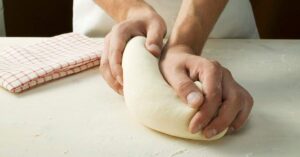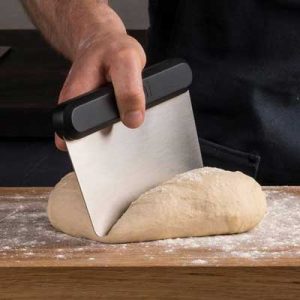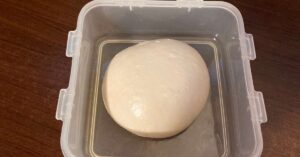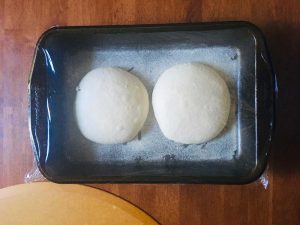Measure out water and yeast into mixing bowl. Mix well.
Add a spoonful of honey to the water and mix well.
Set aside mixing bowl to let the yeast activate and get another bowl to measure the dry ingredients.
Measure flour and salt and mix well.
Slowly start to incorporate the flour/salt mixture into the water/yeast/honey solution. Start by adding a few spoonfuls of dry ingredients at a time and mix it thoroughly using a stiff spatula or wooden spoon. It might be slower this way but it ensures that the flour is fully hydrated into the water.
When you're halfway through the dry ingredients, add a few glugs of olive oil and mix it in well. Continue adding dry ingredients until everything is mixed together.
When all the ingredients are incorporated, you should be left with a very wet and sticky ball of shaggy dough. Cover the bowl up and let it sit for 10 minutes.
With your spatula, mix the dough ball around again. You should notice the texture of the dough is now much smoother than before with less dough sticking to the spatula.
No-knead method: Cover the dough or transport it to a plastic container and let it sit at room temperature 24 hours. If you want to use it sooner, you'll need to knead manually and double (or triple) the yeast. More yeast = faster rise, but the tradeoff is a yeasty taste.
Traditional method: Give the dough a 20-30 minute knead until it can stretch translucently without tearing (called the "window pane test"), then cover it up and let it rise for 1-3 hours, or until it's approximately doubled in size. The time will vary depending on the temperature of your room and how much yeast you use. Note: For this method to work, you'll need to use 1-3g of yeast. Less time = more yeast required to rise in time. The no-knead method is more reliable, less work, and tastes better. For either method, once the dough is strong and stretchable, weigh and divide the dough into tightly rolled individual dough balls for proofing. This step is crucial and will have a big impact on your finished product. Check the video above for visual instructions on how to do this.
Place the dough ball into a lightly floured (or oiled) container and cover it up tightly. Let the ball proof for 1-2 hours before using it to make pizza. If your dough is coming directly from the refrigerator, give the dough 6-7 hours to proof at room temperature. If huge bubbles start forming on during proofing, it's over-proofed: next time try a quicker proof, or do it in a colder room. Higher temperature = faster proofing. Alternatively, place the floured container with the dough ball in the fridge for up to 3 days. When you're ready to use it, make sure to give it 2-3 hours to reach room temperature before using it. If you live in a warm climate, this might take a lot less time.
